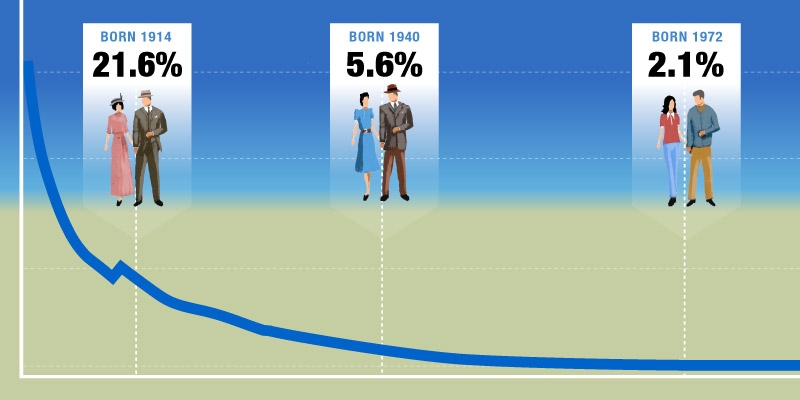Rates of Return for the Canada Pension Plan

There is confusion regarding the rates of return earned by the Canada Pension Plan Investment Board (CPPIB), which manages the investable funds of the Canada Pension Plan (CPP) with the returns received by individual Canadian workers in the form of CPP retirement benefits.
The returns of the CPPIB do not in any direct way influence the CPP retirement benefits received by individual Canadian workers. CPP retirement benefits are basically determined by the number of years a person works, their earnings in each year (relative to the maximum under the CPP), and the age at which they retire.
The returns to the CPPIB, however, do benefit workers and retirees indirectly. Specifically, the returns earned by the CPPIB can reduce the need for higher contribution rates. In addition, sustained over-performance by the CPPIB over time could allow for a reduction in the contribution rate and/ or an increase in the benefits paid. However, the opposite is also plausible, whereby under-performance by the CPPIB could necessitate higher contribution rates and/or reduced benefits.
Based on the model employed in this paper (which assumes workers retire at age 65), the real rates of return enjoyed by Canadian workers from their CPP retirement benefits ranged from an incredible 45.5 percent in 1969 to just 3.6 percent in 2015.
Specifically, there was an initial steep decline from the 45.5 percent real rate of return observed for retirees in 1969 to less than one-third that rate in 1989 (12.6 percent). By 2003, the real rate of return for CPP retirees was halved to 6.3 percent. By 2015, the real rate of return for CPP retirees had declined to 3.6 percent.
The projected real rates of return for the CPP continue to fall to 2.1 percent for those retiring in 2037, stabilizing thereafter. In other words, Canadian workers retiring after 2036 (people born in or after 1972) can expect a real rate of return of 2.1 percent from the CPP.
The rates of return noted above are further reduced if certain assumptions are changed. For example, making maximum contributions over the entire course of one’s working life (ages 18–65)—rather than assuming zero contributions for the first eight years (which are exempted from the retirement benefit calculation), as done in the first set of calculations—reduces the real rate of return to 1.7 percent for workers retiring in 2037 or later (compared to 2.1 percent).
A different way to think about the returns received by Canadian workers from their CPP retirement benefits, particularly those borne after 1971, is to compare the expected rate of return (2.1 percent real rate of return) with the required real rate of return for the CPPIB of 4.0 percent. In other words, Canadian workers born after 1971 pay into a fund that must generate a 4.0 percent real rate of return to meet its obligations, a fund which provides a 2.1 real rate of return in the form of CPP retirement benefits.
There are two principal reasons for the decline in the rates of return. The first is the difference in the periods of contribution for Canadian workers, particularly in the early years of the CPP. For instance, in the initial years of the plan, only ten years of maximum contributions were required to receive a full CPP benefit. That period is currently 39 years.
The second principal reason for the decline in the rates of return is the increasing contribution rate to the CPP (i.e., the tax rate). The CPP was launched in 1966 with a contribution rate of 3.6 percent. The CPP contribution rate climbed steadily beginning in 1987, and stabilized at 9.9 percent in 2003. It’s worth noting that the stabilized CPP contribution rate is nearly three times higher than the original contribution rate of 3.6 percent.
Authors:
More from this study
Subscribe to the Fraser Institute
Get the latest news from the Fraser Institute on the latest research studies, news and events.



